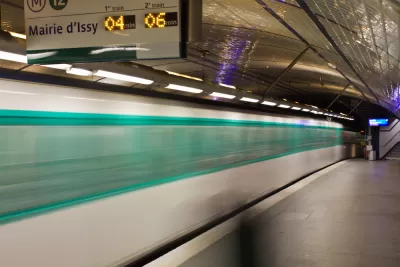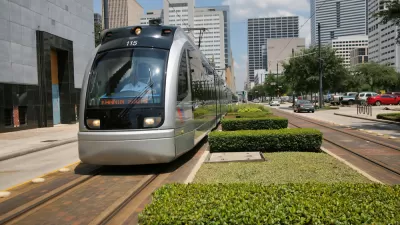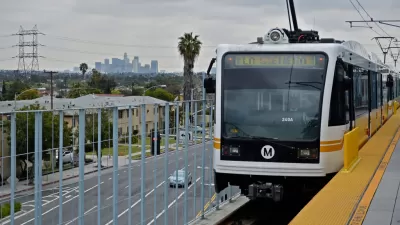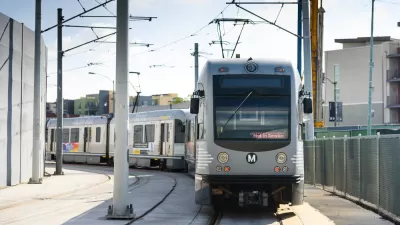The proposed Grand Paris Express program, which began construction this summer and is expected for completion in 2030, will serve 2 million people a day at "wildly fast speeds." Then there's light rail in the United States.

According to Yonah Freemark, "Green Line trains [between Minneapolis and St. Paul] are taking up to an hour to complete their journeys, and even optimistic schedules released by the local transit agency put running times at 48 minutes, or less than 14 mph on average." Other light rail lines failing to light up anybody's radar gun: Houston's North Line, with an average speed of 17 miles per hour, and Los Angeles' Expo Line, with an average speed of 18 miles per hour.
Freemark makes the following argument about how travel times negatively impact the adoption of public transit: "With speeds like those light rail lines or services like the Silver Line, it’s little wonder that it’s so difficult to convince people to get out of their cars in so many places. The fact of the matter is that services like this often do not provide much mobility improvement over the bus services they replace. That’s particularly true for large regions where too many destinations are simply too far away to be accessible by transit that averages such slow speeds."
For comparison, Freemark goes on to detail the ambitious, $35 billion Grand Paris Express program, which "will completely alter the landscape of this large metropolitan area…"
FULL STORY: The value of fast transit

Alabama: Trump Terminates Settlements for Black Communities Harmed By Raw Sewage
Trump deemed the landmark civil rights agreement “illegal DEI and environmental justice policy.”

Planetizen Federal Action Tracker
A weekly monitor of how Trump’s orders and actions are impacting planners and planning in America.

The 120 Year Old Tiny Home Villages That Sheltered San Francisco’s Earthquake Refugees
More than a century ago, San Francisco mobilized to house thousands of residents displaced by the 1906 earthquake. Could their strategy offer a model for the present?

In Both Crashes and Crime, Public Transportation is Far Safer than Driving
Contrary to popular assumptions, public transportation has far lower crash and crime rates than automobile travel. For safer communities, improve and encourage transit travel.

Report: Zoning Reforms Should Complement Nashville’s Ambitious Transit Plan
Without reform, restrictive zoning codes will limit the impact of the city’s planned transit expansion and could exclude some of the residents who depend on transit the most.

Judge Orders Release of Frozen IRA, IIJA Funding
The decision is a victory for environmental groups who charged that freezing funds for critical infrastructure and disaster response programs caused “real and irreparable harm” to communities.
Urban Design for Planners 1: Software Tools
This six-course series explores essential urban design concepts using open source software and equips planners with the tools they need to participate fully in the urban design process.
Planning for Universal Design
Learn the tools for implementing Universal Design in planning regulations.
Clanton & Associates, Inc.
Jessamine County Fiscal Court
Institute for Housing and Urban Development Studies (IHS)
City of Grandview
Harvard GSD Executive Education
Toledo-Lucas County Plan Commissions
Salt Lake City
NYU Wagner Graduate School of Public Service





























